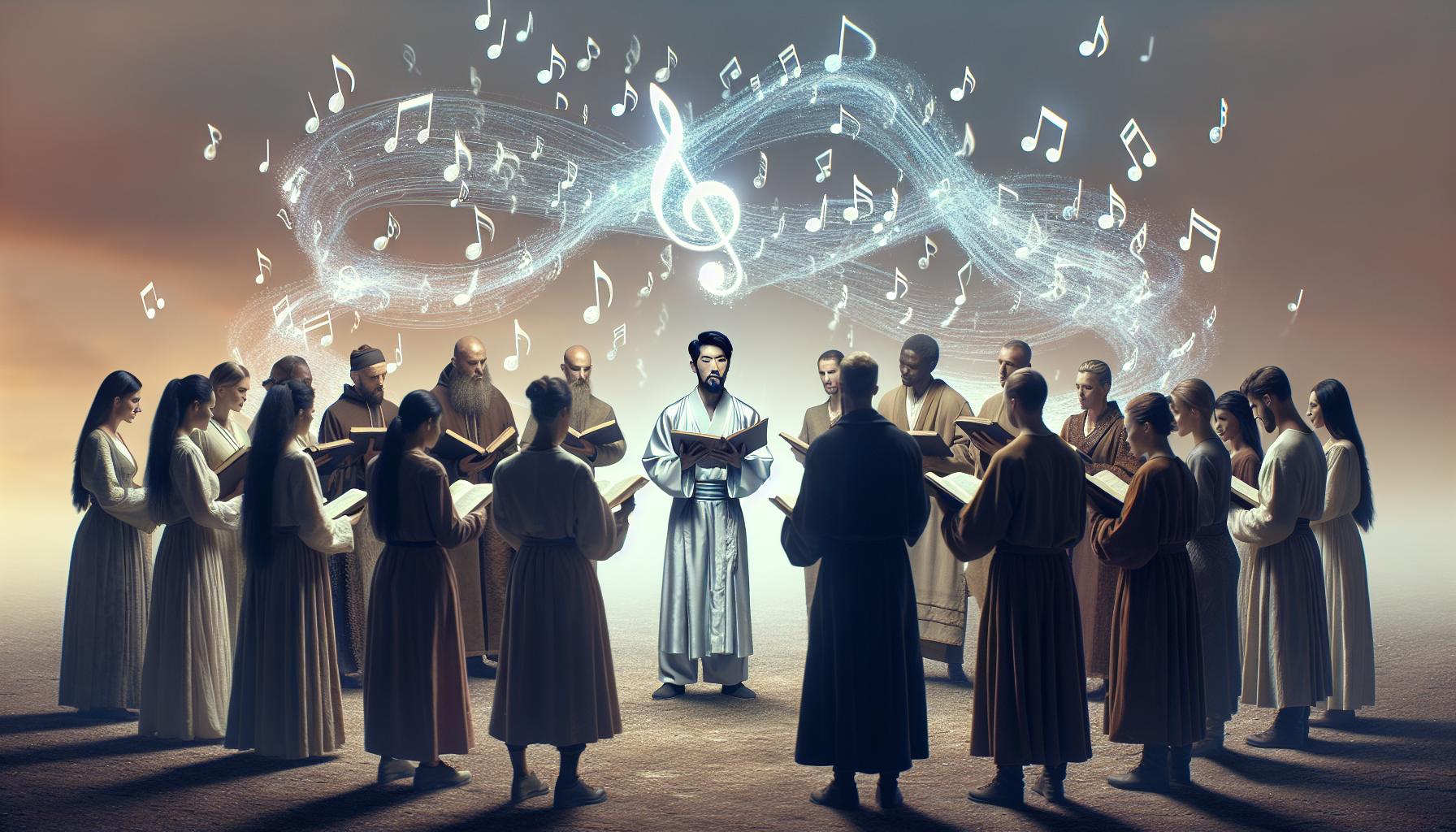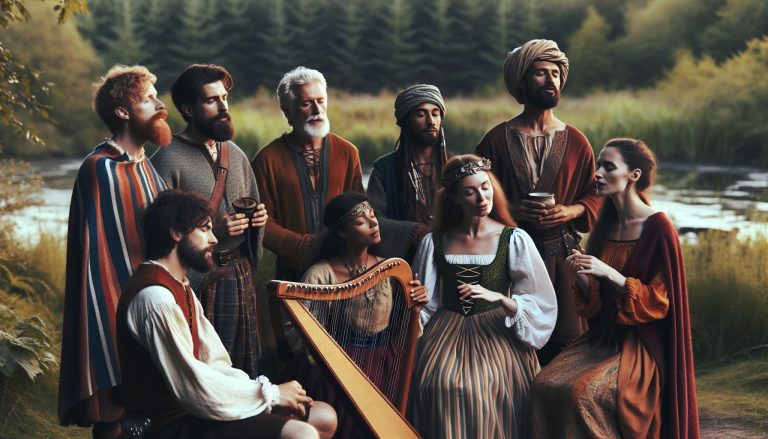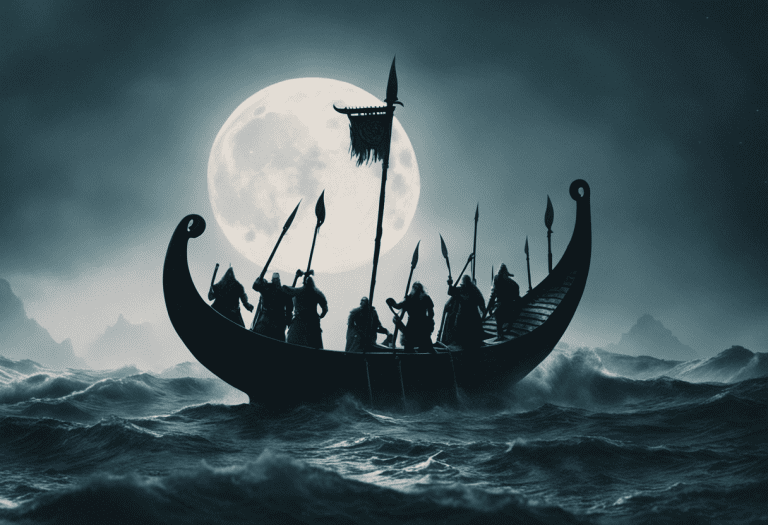Rhythmic Chants in Lit: Examples & Cultural Impact
Chants have echoed through the halls of literature, weaving magic with their rhythmic cadence. You’ve likely stumbled upon them in epics and plays, where they build atmosphere and deepen narratives.
They’re not just for ancient texts; modern literature also embraces these lyrical refrains. From Tolkien’s Middle-earth to Maya Angelou’s powerful verses, chants infuse stories with a unique pulse.
Dive into the world of chants in literature, and you’ll discover a tradition that transforms words into enchanting spells. Get ready to explore how these repetitive phrases have cast their spell on readers for centuries.
Origins of Chants in Literature
The practice of integrating chants into literature has roots that stretch deep into antiquity. These rhythmic sayings are as old as language itself, likely stemming from a time when oral traditions dominated cultural narratives. Ancient societies used chants as a mnemonic device to preserve their stories, laws, and historical records.
Ancient Epics and Rituals
Think back to the epic poems of Homer—The Iliad and The Odyssey. These works are packed with formulaic phrases and repetitions that smacked of chants and were used to aid the memory of storytellers who recited these lengthy tales. In a similar vein, religious texts like the Vedas, which are central to Hinduism, were composed with a particular cadence intended for chanting during sacred rituals.
Cultural Significance
Chants found in literature aren’t just for memory’s sake; they hold cultural significance. They reflect a community’s values, beliefs, and shared experiences. Across different cultures, chants are woven into celebrations, ceremonies, and storytelling as a way of strengthening communal ties and passing down traditions through generations.
The Transition to Written Form
With the advent of writing, chants made their way onto the page, but they retained their oral flair. They continued to play a crucial role in literature by highlighting dramatic scenes and conveying a sense of otherworldliness.
- Rhythmic Patterns: In medieval texts, you’ll often encounter alliterative verse, a form of chanting that uses the same consonant at the beginning of each stressed syllable. This style is prominent in works like Beowulf, where the robust beats of the language echo the blows of warriors in battle.
By examining the origins of chants in literature, you gain insight into the profound impact these patterns of words have had on the evolution of storytelling. From aiding memory to embodying cultural essence, chants are a testament to the enduring power of the spoken word. Whether you’re thumbing through ancient scripts or modern classics, the presence of chants invites you to experience the resonating connection between past and present narrators.
The Power of Rhythmic Cadence

Rhythmic cadence isn’t just a catchy element of literature; it’s the heartbeat of a story. As you delve deeper into chants in literary works, you’ll recognize this element’s ability to grip readers and hold their attention. The structured repetition of sounds and phrases can utterly transform poetry or prose. It adds a musical quality that not only entertains but assists in memorization and emphasizes key themes.
Think of how rhythm naturally enhances learning and memory. Songs from your childhood linger in your mind decades later. In the same way, chants using rhythm make stories and messages far more memorable. Historians rely on this principle when poring over texts from bygone eras where rhythmic cadence helped preserve culture and knowledge across generations.
In narratives, chants often embody the core sentiments of characters or civilizations. They provide insight into societal values and personal struggles, vocalizing emotions that might be lost in plain text. The meter and beat embedded within chants tie to one’s cultural heartbeat, hence their widespread use in rituals and ceremonies.
When you come across rhythmic cadence in literature, you tap into something deep and primal. It pulls you into the tale, urging you to feel the writer’s cadence as it echoes the ancient tradition of oral storytelling. The energy released through rhythmic words can influence a story’s pace, and build suspense or excitement without you even realizing it.
From ancient epics to modern-day novels, chants hold the power to transport readers to different worlds and states of mind. Consider the stirring effect of rhythmic calls in war scenes or the soothing nature of a lullaby woven into a narrative. These aren’t mere words strung together; they’re carefully crafted to strike a chord with the audience.
Rhythmic cadence reiterates that chants in literature are not solely for aesthetic pleasure; they serve a larger purpose. Whether it’s fostering connection, enabling remembrance, or amplifying a story’s emotion, the rhythm inherent in chants has a profound impact on literature and the experience of the reader.
Chants in Ancient Texts

Chants hold an esteemed place in the annals of literature, particularly within ancient texts where they serve as gateways to the past. You’ll find that the Epic of Gilgamesh, one of the earliest known works of literature, is replete with chants serving as invocation to the gods and as a means to impart ancient lore. Similarly, the Vedic texts of ancient India utilize chants not merely as literary devices but as spiritual hymns that shaped an entire civilization’s beliefs and daily practices.
In ancient Greece, chants underlined much of their famed epics. Take Homer’s Odyssey for instance; the rhythm and meter of its verse carry the narrative and guide you through Odysseus’s journey with a sense of urgency and momentum. Embedded within such texts, chants forge a direct connection between you and distant cultures.
Beyond their narrative power, chants in ancient texts functioned as mnemonic devices. Considering the scarce literacy rates in ancient times, chants became crucial in preserving history and knowledge. In works like the Book of the Dead from ancient Egypt, chants were also believed to possess supernatural elements, aiding the dead’s passage to the afterlife.
Knowing the roots of literary chants offers a deeper understanding of how chants have shaped narrative forms and have been pivotal in the transmission of culture. The role they’ve played in pivotal texts isn’t just historical trivia; it reveals the profound influence rhythm has in connecting human experiences across ages. As you delve deeper into ancient literatures, you’ll notice the omnipresence of chants, underpinning the very fabric of human expression and storytelling.
Chants in Modern Literature

Modern literature isn’t shy about borrowing from the past, especially when it comes to the resonating power of chants. While epic tales of old utilized chants to echo through the ages, contemporary writers weave chants into their narratives to add depth and texture. Take, for example, the way chants bridge the gap between the traditional and the contemporary, infusing novels with an almost timeless quality.
Today, you’ll find that chants are not just remnants of ancient rituals but rather a tool used by authors to highlight themes and underscore emotions. Books like Toni Morrison’s “Beloved” integrate chants to showcase the anguish and resilience within her characters. The rhythmic repetition serves as both a hymn of sorrow and a badge of survival for the protagonists.
Similarly, in poetry, chants help shape the essence of modern protest. Maya Angelou’s powerful verses in “Still I Rise” can be seen as a modern chant, celebrating the strength and indomitability of the human spirit. The repetition and rhythm turn her words into a rallying cry for generations.
- Express internal conflicts: Characters often use chants as a way to voice their internal struggles.
- Reveal cultural backgrounds: The incorporation of specific chants speaks volumes about a character’s heritage.
- Connect characters: Shared chants can signify the bond between individuals or communities.
Dive into the worlds of Fantasy, and you’ll see chants morph into spells and incantations. J.K. Rowling’s Harry Potter series, for instance, has made “Expecto Patronum” a household chant, signifying the power of positive memories over darkness.
Chants are everywhere in literature, from song lyrics that characters cling to, to dystopian mantras meant to control societies in novels like George Orwell’s “1984.” These chants become entrenched in the reader’s mind, ensuring that the story resonates beyond the final page turn.
Exploring the Enchanting Spells of Chants

Imagine yourself immersed in a novel, and suddenly you’re entranced by a song or spell scripted in a language not entirely your own. Chants in literature aren’t just for the scene; they’re magic in their own right, conjuring images and emotions that stick with you long after the book is closed.
Folklore and myths come alive through chants. Recall the ancient tales where a simple set of words holds the power to unlock mysteries or ward off evil. These aren’t merely plot devices but are integral to the tapestry of the story. Through a careful selection of rhythm and repetition, authors give chants the gravity to influence a character’s fate.
But it’s not all about drama and mystique. Chants can also be found in the whispers of children’s rhymes or the heartening calls of protest songs within a narrative. They reflect the community’s pulse, fostering a bond that’s almost tangible.
- Records of our humanity – Rhythmic chants in narratives often mirror society’s heartbeat.
- Fabric of fantasy – Spells woven into story arcs act as keys to otherworldly dimensions.
- Echoes of resistance – In dystopian settings, chants are both shackles and keys to freedom.
Within modern literature, you’ll come across chants that are not just remnants of ancient practices but are reimagined to fit contemporary themes. They add layers to characters, giving them depth beyond the printed words—revealing their fears, hopes, and the very essence of their being.
In fantasy genres, spells cast through chants are essential to world-building. They provide structure and rules to the magical realms, ensuring characters are bound by the lore that readers come to learn and love.
Think of your favorite dystopian tale. Here, chants often appear as propaganda—rhyming slogans that both oppress and empower. Through these, authors demonstrate the persuasive power of language and the human spirit’s resilience against it.
Real-world influence can’t be ignored, either. Authors draw inspiration from actual chants heard in protests and marches, infusing their narratives with a raw, undeniable power of words united for a cause. Chants become more than a literary tool; they are the voice of the people, echoing from the streets into the stories.
Conclusion
Chants in literature are a bridge to the human experience, echoing the heartbeat of societies and the whispers of individual aspirations. They’re not just echoes of the past but vibrant threads woven into the fabric of contemporary storytelling. As you’ve seen, these rhythmic verses serve as powerful tools that shape narratives, breathing life into characters and settings. Whether it’s the magic of folklore or the defiance in dystopian worlds, chants transform words into a collective force that resonates with readers across time and space. Embrace the rhythm and let the chants you encounter in literature transport you to realms where words are both the journey and the destination.







